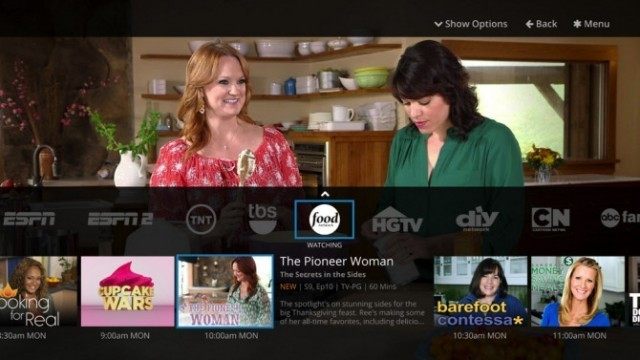Variety’s Todd Spangler has this mostly right. Dish Network’s Sling TV, a bundled streaming package of cable channels priced at $20 per month, is no game changer. At least I hope not (for reasons I’ll explain below). The willingness of content providers like CNN and ESPN to go the streaming route is, though, a powerful sign that the world is changing and that the cord-cutting revolution is real.
Our Left-Wing Entertainment Multinational Overlords are getting nervous, and that’s always a good thing.
Let’s start with the fact that along with TNT, TBS, the Food Network, ABC Family and a few others, that CNN, ESPN and ESPN 2 are included in this streaming package. Two big reasons people are reluctant to cut the cord from their obnoxiously priced $100 cable packages is sports and news.
Until Sling TV there was no way to access live sports if you cut the cord and gave up your cable package (unless you used rabbit ears to grab whatever sports are provided by the broadcast networks). Until last November when CBS launched a free streaming news channel (that is actually pretty good), the same was true for news.
Through Sling TV, you now have streaming access to sports and news for $20, about a fifth the price of your current cable package. If you’re currently paying $30 a month combined for Hulu, Netflix, and Amazon Prime, for another $20 you can now supplement that with Sling. You’re up to $50 a month for TV, but that’s still almost half as cheap as your current cable package.
Not a bad deal.
Access to sports and news through Sling TV could very easily hasten fence-sitting cord cutters to finally take the leap. That would be a huge and costly backfire of existential proportions. The multinationals claim they aren’t concerned Sling TV will cause more cord-cutting. They should be.
The idea behind Sling, they say, is to attract the 20 million or so Millennials who they believe will never buy a cable package. And this is where Sling TV is no game changer: Millennials are not going to flock to this. Sling TV gets it exactly wrong in trying to attract this crowd.
Young people who want nothing to do with cable television (for a whole host of reasons) are not going to be fooled into buying what is essentially a streaming cable package filled with a bunch of channels they don’t like. You could probably convince them to purchase ESPN or CNN as individual $3.95 a month streaming channels, but the TBS, TNT, Cartoon and Food Network additions only increase the price of the Sling TV package and offer more of the same.
Millennials don’t want commercials, don’t want to watch programs during times appointed by a network, and have no network loyalty. Moreover, the shows they already enjoy from those particular networks are shows they have already found through various streaming services they are already happy with.
Then there’s Sling TV’s dumbest decision, which is to restrict the use of its service to only one device at a time. I sympathize that Sling TV is concerned about piracy through the password/account sharing Millennials are notorious for engaging in, but this kind of restriction will likely do Sling TV more damage than good.
In general, though, Millennials do not want to watch TELEVISION. Millennials want to watch shows and movies, they want to binge, and they want to do this when they want to do it. Sling TV will offer the ability to go back and watch 7 to 10 days worth of programming — which means no binging.
Dumb. Dumb. Dumb.
My hope that Sling TV is no game changer is based on my burning hatred of any kind of bundled television. Streaming or not, I’m tired of paying for channels I don’t watch. And I’m really tired of channels like CNN and MSNBC making money off of me, even though I don’t watch them. Bundled cable is a racket that undermines the very idea of free market competition.
Because of bundling, even though no one watches CNN, that race-baiting, left-wing network is still wildly profitable. Like dozens of other low-rated networks, the majority of the money CNN makes is not based on eyeballs=advertising but how many cable packages CNN is included with.
CNN is available in something like 100 million homes. Nevertheless, less than 1% of those homes actually watch CNN. Regardless, CNN is still making money off any home where CNN is included in the cable package.
Through the racket of bundled cable we are forced to subsidize CNN. If you want Fox News and Turner Classic Movies and AMC and ESPN, you’re forced into an over-priced package with CNN. That’s un-American. In a just world, years ago, CNN would’ve died the long, slow, painful death it deserves. The same is true for many other networks.
The quality of television overall will be much, much better if it goes back to a world where revenue is based only on the simple formula of eyeballs=advertising. It would be fascinating to live in a world where our Entertainment Multinational Overlords actually had to attract customers in order to make money.
Sling TV is nothing more than a cynical attempt to keep the immoral bundled model alive in the age of streaming. For the good of our culture (and pocketbooks), let’s hope it fails miserably at doing anything more than hastening the righteousness of cord-cutting.
John Nolte on Twitter @NolteNC

COMMENTS
Please let us know if you're having issues with commenting.